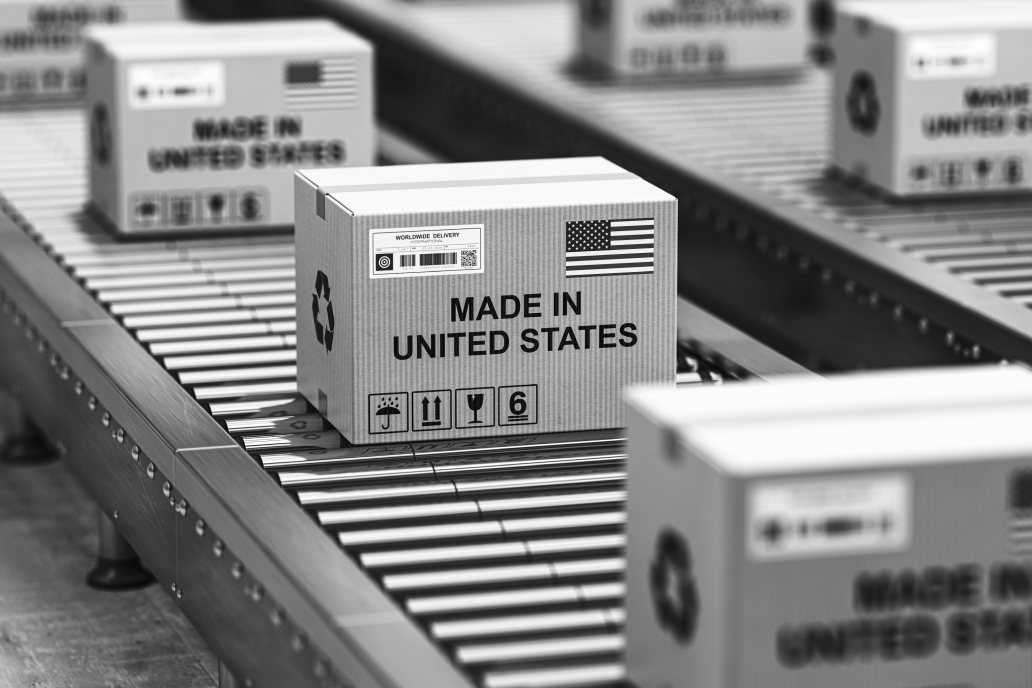- admin
- 0 Comments
- 2942 Views
Introduction
Last week, President Trump announced sweeping changes to U.S. tariff regulations, sparking widespread concern and speculation across global e-commerce and retail industries. These measures focus on two primary points: ending the $800 “de minimis” threshold for low-value imports made in China (with plans to extend this policy to other countries) and raising tariff rates overall. Given that China manufactures roughly 25–30% of the world’s products, these shifts have had an extensive impact – no matter the country of origin of the business—shaping cross-border business strategies, trade policies, compliance requirements, and financial plans. The abrupt introduction of these rules, coupled with their ongoing revisions, has created significant uncertainty, making it nearly impossible for businesses to plan or adapt effectively.
Below, we explore what it means for businesses selling into the United States.
When considering tariffs, it’s best to start by answering four key questions. First, what kind of goods are being shipped and where are they manufactured? These factors directly determine the tariff rates. Second, which warehouse are you shipping from and what is the value of the shipment? These questions can significantly affect the overall customer experience. In the following sections, we will dive deeper into each of these questions to help you better understand the complexities and impact of tariffs.
What kind of goods are being shipped and where are they manufactured
Tariffs depend on both the type of goods—which is typically identified by the HS Code—and their country of origin, indicated by the “Made in” label. This means that even if a U.S. consumer purchases from a French retailer shipping out of France, the items would still be subject to Chinese tariff rates if they were manufactured in China. Conversely, if companies like Shein or Temu relocate their production to Vietnam, those items would then incur Vietnamese tariffs. The same principle applies to vendors producing items in other countries: tariffs are calculated based on each vendor’s manufacturing location.
Moving manufacturing into the US has been suggested as a way to reduce tariffs, but tariffs will still be due on raw materials imported into the US and the production cost will likely be higher. One of the positive impacts of the raise of tariffs is that it may help the circular industry and increase the speed of development of the sector for reuse material.
What is the value of the shipment and Which warehouse are you shipping from
President Trump not only raised tariff rates but also took steps to eliminate the $800 de minimis threshold, which previously allowed low-value imports to enter the U.S. duty-free.
The United States maintains one of the highest de minimis thresholds globally (compared to 150 EUR in Europe, which is slated to be phased out by 2028), it originally raised the threshold from $200 to $800 in 2015 to support trade liberalization and reduce the administrative burden on federal agencies. For context, in fiscal year 2023, the U.S. collected approximately $80 billion in customs duties, amounting to about 1.8% of total government revenue.
Starting May 2, goods made in China or Hong Kong together with goods shipped from China or Hong Kong will no longer qualify for this exemption. For other countries, the phase-out will depend on the Secretary of Commerce certifying that the government has the systems needed to efficiently process and collect duties on low-value shipments. Within 90 days, the Secretary must report to the President on the impact of the policy and may recommend expanding de minimis restrictions to other countries to prevent loopholes.
One of the key points being under review is the risks of placing a disproportionate processing load on Customs and Border Protection (CBP) relative to the revenue collected. To add some perspective – CBP processes more than a billion de minimis shipments per year from 153 million in 2015.
To address potential concerns related to goods shipped from China or Hong Kong through postal services, a special duty rate has been implemented. Instead of incurring standard fees, these items are subject to either a 30% duty based on their value or a flat charge of $25 per item—whichever amount is greater. Importantly, this flat rate is set to increase to $50 per item starting June 1. This measure was introduced to ease the burden on postal services that lack adequate systems and were therefore forced to briefly suspend inbound packages from China and Hong Kong in February, when the exemption was previously removed.
One of the numerous issues raised by this change is that it can lead to a poor customer experience, as consumers will be responsible for both the duty itself and a handling fee—potentially around $20—charged by carriers.
Consumers are increasingly aware of the risks associated with ordering goods shipped from outside the U.S. and may hesitate to purchase items not already located domestically. As a result, sellers are adjusting their supply chains to move inventory into the U.S. before dispatch. This shift is evident in apps like Temu and Shein, which were the most downloaded apps in the US in 2024 and that prioritize U.S. based stock. The user can also now search by the origin of the goods, be aware of the delivery method, and the origin of shipments. While prices may be slightly higher, consumers benefit from faster delivery and no unexpected fees upon receipt. Tariffs still apply but are managed when goods are imported into U.S. warehouses.
The rapid rise of e-commerce and low-value imports has intensified calls to eliminate the de minimis threshold, increasingly viewed as both a regulatory loophole and an unfair competitive advantage. As noted earlier, the number of de minimis entries in the US has surged from 153 million in 2015 to over 1 billion in less than a decade and the EU too is looking at removing such a threshold from 2028.
I’ve only scratched the surface of the issue and focused on e-commerce. In reality, tariffs have a much broader impact: while they aim to protect domestic industries, their costs are often passed on to consumers in the form of higher prices, which can slow the overall economy. Tariffs also function like a tax increase, disproportionately affecting low-income households since they spend a higher percentage of their income on consumption.
According to estimates, the Trump-era tariffs could reduce after-tax income by an average of 1.9%, translating into a potential tax increase of more than $1,900 per U.S. household by 2025. Even if these tariffs are eventually repealed, some costs will likely remain due to the uncertainty and expenses involved in making changes. It’s worth noting that tariffs were cited in the majority of S&P 500 companies Q4 earning calls, underscoring their widespread impact.
It’s also important to consider the compounding effect of taxes in the U.S.: not only are tariffs applied, but sales tax is also due and calculated based on the total price, including any applicable duties. The same principle applies in other countries, where VAT or GST is also charged on the full value of the goods, inclusive of tariffs.
In this rapidly evolving policy landscape, businesses must remain agile, ensuring their systems can quickly adapt to regulatory changes while positioning themselves to seize new growth opportunities.
Feel free to reach out or comment if you want to discuss this more.
Disclaimer: The views, statements or opinions expressed in this article are solely those of the author and do not represent tax advice and are not to be designated to be the views, statements or opinions of any other person, group, association or company.
Image by: maxxyustas
Want to know more? Please contact us at [email protected]

